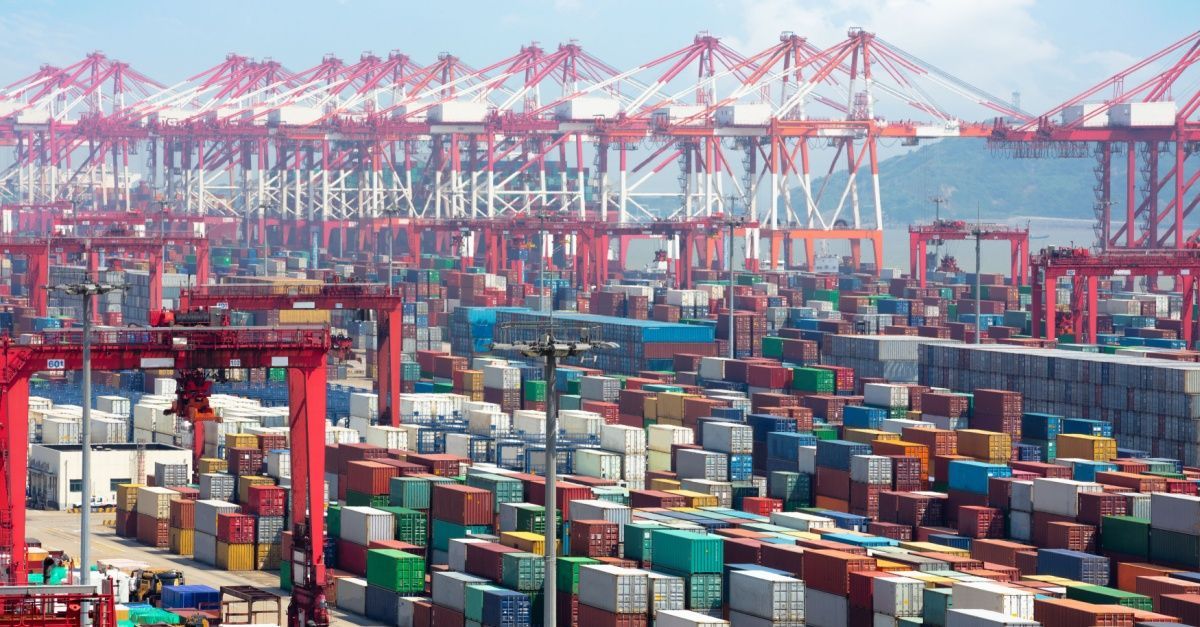Six Strategies for Getting the Most out of Your Expedited Logistics
Blog Post CTA
When time is ticking on delivering your goods, enter expedited logistics to make meeting last-minute deadlines possible. This proven solution has become a go-to delivery option for major industries, including food and drink, e-commerce and retail, and shipping.
It is the quickest delivery service available, and with the benefit of covering almost anywhere, combined with real-time tracking capabilities, you get complete visibility and control over expedited logistics freight movements. This means your deliveries arrive on time, every time.
When you're contending with the complexities and unpredictability of modern supply chains, expedited logistics is the smart solution for dealing with unexpected challenges. Plus, it can play a crucial role in your broader logistics strategy.
To expedite logistics effectively and to know when to use it, careful planning and fine-tuning are needed to get the best out of it. Here are six strategies to help you do just that:
Strategy 1: Know Your Needs
When considering expedited logistics, the starting point should be an evaluation of your specific shipping requirements. There's a lot to consider:
What type of goods are you shipping?- Are they perishable, fragile, hazardous, or valuable?
- What is the final destination of your shipments?
- How quickly do they need to be delivered?
This is 'need to know' information to help you identify critical shipments that require expedited logistics. Plus, ask yourself, what is the risk of opting not to expedite logistics for specific shipments?
For example, let's say you're a shipper facing a
last-minute delivery over a long distance. If you use traditional trucking, you run the risk of longer transit times and missing the deadline. This scenario calls for expedited logistics.
If you transport perishable goods, like food, where the stakes are high for
maintaining food safety and freshness during transit, you would need reefer trucking to expedite logistics.
When planning expedited shipments, you should leverage data to forecast demand. Gather relevant historical data on your shipments, like order volumes, delivery times, locations, and other relevant information. This will enable you to accurately forecast demand and optimize your logistics operation to manage expedited shipments.
Strategy 2: Trust the Experts
Partnering with an expedited logistics provider will prove to be decisive for your business. However, what you want is a company that's more than a provider, be on the lookout for a strategic partner like Entourage Freight Solutions (EFS).
A provider might merely quote you the best routes for expedited shipping;
a partner will service routes for you. Providers offer solutions, but
partners offer and execute them. That's why reliability and experience are attributes you should be looking for when
choosing an expedited trucking company.
Expedited shipping relies on many functions. That means you should prioritize a logistics partner that can offer:
An extensive network of carriers that have been appropriately vetted.- End-to-end shipping visibility with 24-hour support.
- A solid record of regulatory compliance.
- A proven track record of on-time delivery.
- Multiple services and equipment types.
- Speed and flexibility.
- Access to integrated technologies.
All these factors will give you the agility to anticipate and respond to changing supply chain conditions.
The right logistics partner will use a combination of experience and technology to give you value-added services like tracking, real-time updates, and dedicated customer support.
Strategy 3: Communication is Key
Clear communication is valuable to expedited logistics. According to Food Processing, food manufacturers consider communication the most critical factor when choosing an expedited carrier.
That's why you must establish solid communication channels between your business and logistics partner. Communication should be built on trust and reciprocity — it goes both ways.
Every detail matters when trying to get the most out of expedited logistics. Make it a culture to proactively share shipment details, deadlines, and special requirements for expedited logistics freight.
This will keep communication channels open throughout the shipping process and deal with any issues without delay.
Strategy 4: Optimized Logistics Requires Optimized Loading
A strategic and organized approach to loading and unloading goods can prevent delays in expedited logistics.
Efficient and effective loading all starts with optimizing your packing process. What you pack items in will determine how much space is used and affect load capacity. Getting the packaging wrong has a knock-on effect on loading, and suddenly delivery deadlines get even tighter.
Then there's the loading and unloading itself. Implementing efficient loading and unloading procedures that minimize handling time is important.
A proven way to improve loading and unloading efficiency to make the most of expedited shipping is to use technology and automation. This will help optimize your loading and unloading times while preventing unnecessary delays.
In fact, according to
Robotics and Automation, Automatic Truck Loading Systems (ATLS) can reduce loading and unloading times from 30 minutes or more to a matter of minutes.
Strategy 5: Safety First
Speed of delivery should not come at the expense of safety. The correct safety measures can enhance expedited logistics. For example, take securing cargo. If cargo isn't secured properly, delays will occur because of having to resecure shipments or, worse still, clear up any damage. The knock-on effect is lost profits and unhappy customers.
Failure to comply with safety regulations and industry standards will delay expedited logistics. There's nothing more frustrating than missing paperwork or unsafe goods making it onto trucks, which leads to compliance and safety issues.
It's also best to designate regulatory and compliance requirements to a team that can identify and resolve any issues ahead of shipping. This helps time be well-spent further along in the process.
Security is another crucial area that must be managed to prevent expedited logistics delays. Theft and unauthorized access can cause significant disruption to shipping schedules and will often result in missing deadlines. Not only can this result in lost profits, but it will also affect your reputation.
You must implement measures to safeguard against security threats. For example, you should choose secure shipping routes, use container security devices and tracking systems, and even train your staff to help spot signs of tampering or theft.
Anything that helps to minimize the risk of damage, theft, and delays will maximize favorable outcomes in expedited logistics.
Strategy 6: Top-Tier Performance Requires Top-Tier Technology
A combination of industry experience and technology powers the very best expedited logistics. The easiest way for your business to get the best of both is via a logistics partner like EFS.
Your business gets the benefit of experience and access to advanced technology without the associated costs and disruption of overhauling your existing systems.
With the ability to monitor shipments in real-time using advanced tracking systems, every step of the expedited logistics process is visible.
Your customers benefit from that same visibility, too.
They experience the power of expedited logistics through real-time status updates that integrated technology can offer. This means they know exactly when they will receive their shipments.
Plus, there's the bonus of technology gathering essential data to help you optimize delivery routes, maintain safety and security, and more, all of which helps to eliminate delays and ensure on-time delivery.
Across every function of your logistics operation, the blend of professional experience and technology will help shape your business's future.
With the Right Data, Improvement is Inevitable
The role of data visibility now matters more than ever, especially amid the complexities and challenges of the modern supply chain. This is true for expedited logistics. Thanks to integrated technologies, data is more readily accessible. But it's only by gathering the right data that you can improve your expedited logistics.
One essential data set you should focus on is customer and internal stakeholder feedback. Therefore, honest feedback should be encouraged to determine whether you are making the most of expedited logistics. Your customers and internal stakeholders are the people experiencing the service first-hand.
Their feedback is crucial to identifying issues and fine-tuning your expedited logistics strategy.
Equally, you should analyze key performance metrics to identify where you can enhance areas. The details and metrics really do matter when it comes to minimizing delays, cutting costs, and maximizing the full availability of your logistics network.
To ensure that the right data is gathered and used effectively, implement a culture of continuous improvement. This stops your expedited logistics strategy from becoming stagnant while providing a roadmap for the future of your business.
Sustainable Expedited Logistics Starts Here
Armed with these six strategies, the experience of professionals like EFS, and integrated technologies, you're equipped to shape an expedited logistics strategy that's manageable and sustainable.
Offering 24/7 solutions proven to deliver outstanding customer service, you can access a wide selection of expedited trucking services, including
full and
less-than-truckload deliveries,
refrigerated transportation,
special projects, and more.
With the rise in foodservice subscriptions, meal kits, and same-day delivery for goods, Entourage Freight Solutions doubled down on traceability and instant access to capacity through
expedited shipment services. We leverage our expertise and resources to find your capacity when you need it most.
Request a freight quote today and delight your customers with a new level of expedited logistics that goes the distance.









